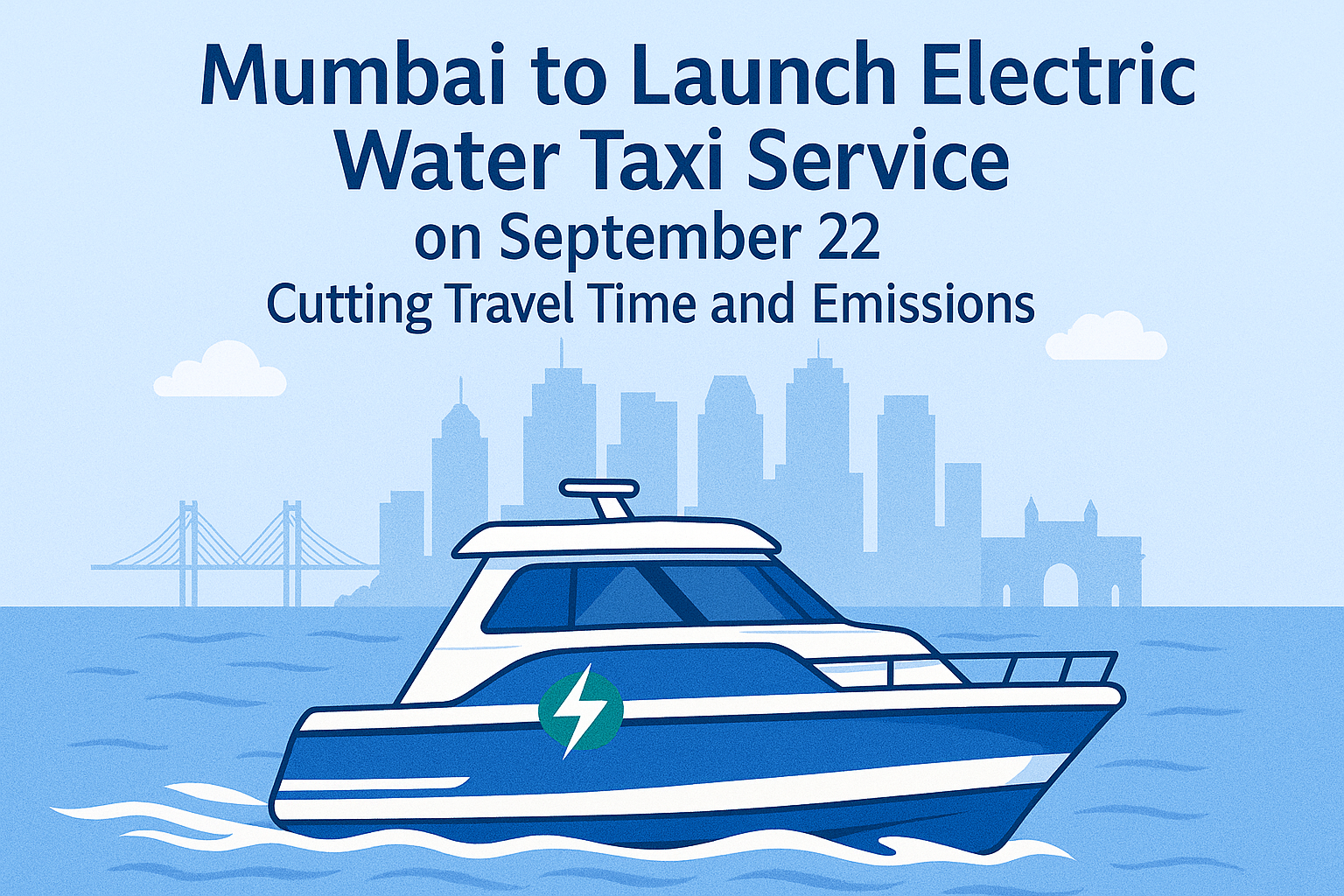
Mumbai to Launch Electric Water Taxi Service on September 22, Cutting Travel Time and Emissions
Mumbai is gearing up for a transportation revolution as the city prepares to launch its much-awaited electric water taxi service on September 22. The service, connecting the Gateway of India and Mumbai Ferry Wharf with Jawaharlal Nehru Port Authority (JNPA), promises to deliver not only faster connectivity but also a greener and more sustainable travel option for commuters.
A Greener Alternative to Wooden Boats
At present, wooden boats dominate the route, charging around ₹100 per passenger and taking over an hour to complete the journey. In sharp contrast, the new electric boats will cut travel time to under 40 minutes. For Mumbaikars who often struggle with road congestion, this development offers a much-needed respite by introducing speed and efficiency without harming the environment.
The shift to electric boats highlights the city’s growing commitment to clean energy solutions. Unlike diesel-powered ferries that release harmful emissions, the electric water taxis will operate on renewable energy and eco-friendly technology. This makes the service a perfect fit for Mumbai’s vision of sustainable urban mobility.
Phase-Wise Rollout of Modern Vessels
Confirming the development, Sohel Kazani, owner of Bharat Freight Group (BFG) – the company managing the operations – revealed that two boats will be deployed in the first phase. One vessel is a hybrid, powered by solar energy, electric batteries, and a diesel backup, while the other is fully electric. Both vessels are designed to be charged in less than an hour, ensuring minimal downtime and consistent operations.
In the second phase, four hydrogen-powered boats will be introduced once supporting generators are installed. This multi-phased expansion plan positions Mumbai at the forefront of adopting next-generation maritime technology.
Design, Comfort, and Safety
Made of fibre and glass, and following a sleek European design, the electric water taxis promise a smoother, more stable ride compared to the older wooden boats. These vessels are not only more energy-efficient but also more comfortable for passengers, providing enhanced seating, stability, and overall travel experience.
For regular commuters, this means journeys that are not only quicker but also safer and more reliable. The boats have been designed to withstand challenging coastal conditions, adding an extra layer of security for travelers.
Expanding Routes Beyond JNPA
While the initial launch connects Mumbai’s business hub to JNPA, BFG has ambitious plans to expand the electric water taxi service across multiple routes. Proposed destinations include Elephanta Caves, Belapur, Alibaug, and even dedicated harbor tourism circuits.
This expansion could unlock new possibilities for both commuters and tourists. For daily travelers, it offers an alternative to congested roadways and lengthy ferry rides. For tourists, the service promises a cleaner, faster, and more enjoyable way to explore Mumbai’s coastline and nearby attractions.
A Step Towards Sustainable Mobility
The launch of this service aligns with the government’s broader mission to adopt clean and renewable energy in the transportation sector. With rising concerns about air quality and climate change, the introduction of electric and hydrogen-powered boats is a milestone moment for Mumbai.
By adopting green maritime technology, the city sets an example for other Indian coastal cities. It showcases how traditional transport systems can be modernized to reduce environmental impact while improving commuter convenience.
Conclusion
Mumbai’s new electric water taxi service is more than just a transportation upgrade—it is a symbol of the city’s shift towards sustainability, innovation, and better connectivity. With reduced travel times, eco-friendly operations, and future expansion plans, the service is poised to transform how people move across Mumbai’s coastal routes.
For a city constantly on the move, this initiative offers a glimpse into the future of urban transport: fast, clean, and inclusive.





